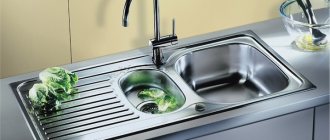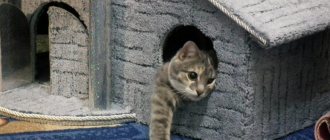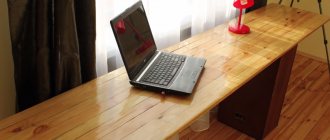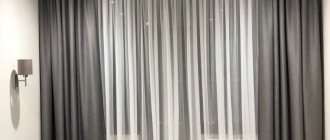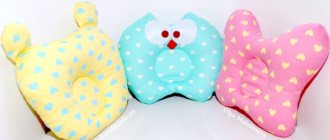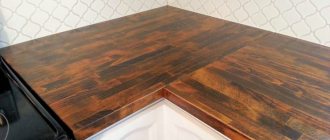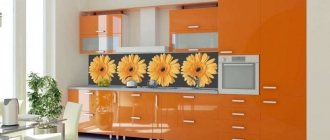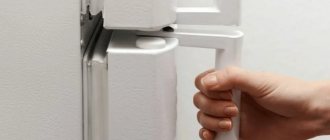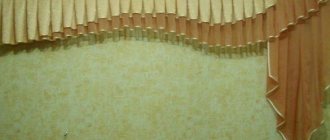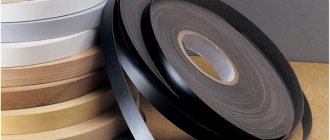Hot melt adhesive for furniture edges is one of the types of hot melt adhesive that has been widely used for fifty years. From the very moment it appeared on the market, it has proven itself from the very best sides and has firmly consolidated its position, not losing it to this day. And not surprisingly, it is extremely easy to use and incredibly practical. At normal room temperature, this type of hot melt adhesive is in a solid granular state.
These granules can look like fine powder, medium-sized peas, various types of tablets, rods of different lengths, as well as various colored bars. This makes it very convenient to store, transport and use. After all, it’s easier to transport a package of tablets than a bucket of liquid glue, and it’s easier to store it too.
When it's time to use the glue, you need to heat it to the temperature indicated on the package, and the glue will transform into a liquid consistency. When it cools (by which time it has already been spread in the form of a thin coating over the edge tape or any other surface), it turns into a solid state again. This process can be repeated many times, heating and cooling the hot melt adhesive as needed.
After cooling, hot melt adhesive, depending on the model and manufacturer, has an almost imperceptible transparent or black color. It guarantees reliable adhesion, as it very firmly and reliably grips the surfaces that need to be glued. This type of glue has many other advantages. Its most important advantage is that it is absolutely harmless to humans and the environment, if, of course, it is used in accordance with the instructions. And in the modern world this is so necessary.
Hot melt adhesive is also one of the most economical types of glue; you need very little to glue, for example, a furniture edge with high quality and for a long time. In addition, he does it very quickly; the speed of gluing is also his big advantage. A successful combination of hot melt adhesive with a PVC or ABS based edge and a melamine edge. It can also be used in conjunction with decorative High Pressure laminates, as well as any other types of high pressure laminates.
Don’t forget that the consistency of hot melt adhesive does not allow it to spread over the entire surface of the parts, so it is precisely distributed over the required areas, guaranteeing reliable fixation and without staining everything around. This is incredibly convenient both during and after work - no extra cleaning is required, and, therefore, hot melt adhesive saves your time, which is always in short supply.
Unauthorized full or partial copying of materials is prohibited. For agreed use, a link to the resource is required.
For pieces of furniture made from laminated chipboard, untreated edges do not look very aesthetically pleasing. In addition, the formaldehyde resin that holds the chips together in the slab can become a source of harmful fumes. To avoid these problems, use a special furniture profile or edge. Special equipment is usually used to glue the edges, but you can handle this task yourself at home. So, edge for a tabletop with glue - how to glue? Let's talk about this.
Types of furniture edges
Laminated chipboard is one of the most common materials in furniture production. The furniture edge is designed to mask the cuts that occur after cutting the required parts. Various edges are used to make decorative strips. They are made from different materials. Their properties and prices are also different. Before gluing the edge to the tabletop, let's look at the main types of materials.
Paper with melamine
Melamine-impregnated paper edging is the cheapest option. To make it, thick paper is used, impregnated with melamine and coated with varnish. For ease of edging, an adhesive coating is applied to the back of the film. Working with the material is extremely simple: you need to heat it up and press it well against the furniture end.
Important! Paper edging is not only the cheapest, but also the most short-lived type of finish.
The most common paper tape thicknesses are 0.2 and 0.4 mm. There is no point in using a thicker edge, and the price will increase significantly.
Important! Paper tapes bend well and do not break, but their mechanical strength is extremely low. For this reason, the paper edge is used on the back of a shelf or tabletop - where there is no heavy load.
PVC
Durable and practical polyvinyl chloride (PVC) has also found application in furniture production. A ribbon is formed from a polymer mass painted in one color or another. The front surface can be smooth or textured (imitation of wood fibers). There are so many color options that you can choose the right one without much difficulty. At the same time, the price of PVC is more than affordable.
It is very easy to glue PVC, which is why home craftsmen often use it. You can achieve good results with simple tools. The advantages of PVC tape include:
- High strength.
- Moisture resistance.
- Chemical neutrality to household chemicals.
The thickness of the furniture edge is 0.4-4.0 mm, with a width of 19-54 mm. There are tapes with or without glue applied.
Important! Polyvinyl chloride also has a significant disadvantage: it does not have a very wide range of operating temperatures (-5 - +45 degrees). Therefore, in winter, furniture should not be left outside for a long time (for example, when moving). Care must also be taken when heating the material before gluing so that it does not melt.
ABS (ABC) plastic
This is an environmentally friendly material that does not contain any harmful impurities. It is durable and practical, resistant to significant temperature changes. It has one drawback - its relatively high cost.
Important! ABC tape can be matte, semi-matte or glossy. There is furniture tape that imitates different types of wood.
Veneer
This is the thinnest piece of wood, processed and shaped like a ribbon. It is used for finishing the edges of veneer products. The material is not cheap and quite difficult to use. The sticker of this material requires certain skills, so it is advisable to turn to the experts.
Acrylic
The back strip of the tape has a pattern on it, and a transparent acrylic layer creates a three-dimensional effect. Therefore, it is also known as 3D. This option is suitable for furniture with an original design.
Profiles
In addition to edges, a special T-shaped or U-shaped profile is used for finishing furniture. For T-shaped profiles, a groove is formed in the edge. The profile itself is hammered into the groove using a mallet. There are 14 and 16 mm profiles made of plastic or aluminum. Installation of a profile with a U-shaped cross-section is carried out using special glue.
Important! The disadvantage of this type of finish is that they are of little use for curved surfaces.
Why do you need to process the ends?
We list the main reasons to process the ends:
- Aesthetics. Leaving your countertops untreated is like brushing only your upper teeth and not your lower teeth. A lot of time is spent in the kitchen, and it is important that the furniture and surroundings bring only positive emotions.
- Extending service life. Here we are talking not only about mechanical damage, but also about splashes of water, clouds of steam and simply temperature changes. The edge seals the end and protects it from all negative influences, extending its service life.
- Health protection. The fact is that formaldehyde resins, harmful to human health, can evaporate through the open edge of a cheap chipboard tabletop, so finishing the ends is simply necessary.
- Masking of defects. If the edge of the tabletop was damaged during transportation (which happens very often), then a correctly selected edge will hide everything.
How to glue an edge to a tabletop with your own hands?
There are 2 methods of gluing:
- The first one refers to materials with an applied adhesive composition.
- The second concerns gluing tapes without an adhesive layer.
Important! In the latter case, purchase a universal glue that glues edging, wood and plastic equally well.
Now about what thickness of material to choose. According to GOST canons, edges that are not visible do not need to be processed. But it’s better not to be lazy and edge all the cuts. This is necessary to avoid the absorption of moisture from the chipboard and the evaporation of formaldehyde:
- To treat inconspicuous areas, use PVC tape 0.4 mm thick.
- On the “front” edges, 2 mm thick polyvinyl chloride tape is used.
- For shelves - 1 mm.
Self-attaching tape with adhesive composition
Start working with thin edges. First, let's look at the installation of melamine or PVC tape. Let's look at how to glue an edge on chipboard with an iron. To do this, you will need scissors and a regular iron with a fluoroplastic attachment. The procedure is as follows:
- Cut a piece of tape with a margin of 1.5-2.0 cm.
- Place the iron on the “deuce” setting.
- Place the edge on the surface to be treated, level it so that small pieces hang over the edges.
- Iron the ribbon through the iron attachment. If there is no nozzle, you can use soft textiles.
- Once dry, trim the edges. To make them look as smooth as possible, process them with a hand router.
Important! Trimming the edges must be done with the utmost care. The material is thin, all defects are very noticeable.
Edging with PVC tape without adhesive
To stick PVC tape without a special layer, you will need universal glue for PVC edges on furniture (for example, “Moment”) and a piece of soft textile:
- Don't forget to read the glue instructions first.
- Now apply glue to the tape, wait the time specified in the instructions, then connect the surfaces to be glued.
- To press the surfaces more firmly, use a wooden block or soft cloth.
- Press the tape with stroking movements to ensure better adhesion.
- After the glue has completely hardened, you can align the edges.
The edge is used to protect the end edges of parts made of MDF, chipboard, PVC from abrasion, moisture and impact. This finish performs a decorative function, and also gives the edges and corners of furniture strength and protects people from the harmful effects of substances such as formaldehyde, which is used in the production of compressed wood boards.
If the border is damaged or peels off, urgent repairs are required. And in this case, the primary task is to select the material and glue for the edges made of PVC, melamine paper or other material.
Useful tips
It is possible to edge the tabletop yourself, but you must follow the instructions and take into account the recommendations. Helpful Tips:
- The edging material is sold with or without an adhesive base; this determines what tools and materials are prepared, and the progress of the work itself.
- If an iron is used as a heating device, the strip is covered with paper or cloth to prevent the top of the strip from melting.
- Leveling and pressing is carried out until the material cools completely;
- The end side of the tabletop must be cleaned of dust deposits and dirt, otherwise the glue will not provide the necessary adhesion.
- The glue is applied to the two surfaces to be glued, and the required time is waited for impregnation.
- If there are chips on the edge, sanding is done, but do not make any effort so as not to scratch the surface.
Varieties of edges
From the variety of edges you have to choose the most suitable one.
Melamine
Made in the form of a self-adhesive tape made of decorative paper, which is impregnated with melamine resins. Typically used for interior decoration of furniture. This is a budget option for edges for chipboard, not characterized by high quality. It has a short service life, is susceptible to moisture and often falls off on its own over time.
The undoubted positive property of the melamine edge is the ease of gluing it; this can be done at home yourself, using a regular iron. The second advantage is the absence of a side, a curb protruding above the edged surface, which sometimes irritates when it gets under your hands when working with the keyboard, and also interferes with sweeping away small debris, for example, crumbs from the dining table in the office.
It is a flexible tape with curved edges that form a side. This edging is made of PVC (polyvinyl chloride). Types of edging differ in width and profile: in cross-section, the edge resembles either the letter “t” (T-shaped) or the letter “p” (U-shaped).
The latter is easier to attach, but less reliable; experts do not recommend using it on surfaces that are often subject to friction: on the seats of stools or benches, on the front edge of a computer desk, which is constantly in contact with the forearms.
PVC edging increases the durability and wear resistance of furniture parts, and reliably protects edges and corners from damage.
The edging is similar to the previous type of edging tape, but is more environmentally friendly. Made from chlorine-free plastic. It has found successful application in furniture production due to its heat resistance and impact resistance.
How to glue melamine edge
If you want to update old furniture and save money, use melamine edging with glue. It’s easy to stick it, for example, on a tabletop:
- Cut a piece of tape with a margin of about two centimeters.
- Place the adhesive side to the tabletop and press with a hot iron or heat with a hair dryer.
- Hold until the glue words melt.
- Move the iron along the edge gradually, preferably no more than 0.5 cm at a time.
- Immediately after warming up and removing the iron, press the edge strip with a dry cloth and hold to fix it.
Advice! An iron or hair dryer will also help you remove the old edge tape. Just warm it up and remove it with a knife or thin spatula.
Fastening PVC and ABS edging
Plastic edging tapes, theoretically, can simply be fixed to the edge of the furniture, but this is extremely unreliable. Additional fixation with glue is preferable.
To attach the T-shaped profile, you will have to lay a recess along the entire edge to be processed. The easiest way to do this is with a milling machine. If you have the skill, it will be replaced by a drill with a circular attachment. However, in general the profile is intended for professionals.
To fix PVC or ABS edges at home, use PVC glue, as well as universal compounds “Moment” and “88-lux”; it is desirable that they be marked “for PVC” or “for ABS”.
Professionals use hot melt adhesives, which are part of a range of thermoplastics. When heated, they become highly elastic, and when cooled, they instantly turn into a solid state. The high fluidity and drying strength of the adhesives is due to the ethylene polymer with vinyl acetate they contain. The main disadvantage of hot melt adhesives, of course, is the need for appropriate equipment for the job.
When working with any border, try to calculate the sequence of pasting so as to avoid joints. Go around the corners with a profile - preferably they should be rounded. If the corners are normal, a thick (PVC or ABS) profile will not go around them, and the melamine edge will most likely break. In this case, you will have to make joints at the corners, which must be sanded at the end so that they are smooth. If you run your hand along the edge of the part, the roughness should not be felt.
Advice! You can get rid of excess edge tape with a very sharp knife, and cut off the ends first. Be careful not to accidentally damage the corners of the furniture. The direction of the knife should be towards the inside of the part.
If the factory edge is damaged or partially fallen off, remove it and replace it with a new one. A little effort and the table is like new!
In furniture production, edging is necessary to protect the end edges of the product from chips, cracks and other damage, and it also protects against moisture and formaldehyde vapors.
You will learn about what types of edges there are, as well as methods for gluing them and how to glue the edges with an iron and hairdryer from this article.
Types of edges - why are they needed?
- The most common type is melamine edge with paper-based glue
. Used for finishing interior areas of furniture. Available, inexpensive, but not the highest quality option. Does not tolerate moisture and wears out quickly. Easily glued at home with a simple iron. - T-shaped flexible profile - is a T-shaped strip, it is inserted into a slot in the side of chipboard or MDF. It is convenient to replace the damaged element in the future without disassembling the furniture. Installation requires a milling machine.
- PVC edging - reliably protects the ends of furniture from damage, is wear-resistant and resistant to moisture. To glue PVC edging, you will need an edge processing machine, so using this type of edges at home is difficult.
- ABS plastic is an eco-friendly option without chlorine. Valued for its resistance to high temperatures and physical damage.
All options can be divided into two subtypes - edges without glue
and with glue.
Average cost of a profile per linear meter:
- PVC 0.4 mm thick - about 25 rubles,
- PVC 2 mm thick - about 40 rubles,
- Melamine material for chipboard – about 25 rubles.
In our country, products from the Rehau company are actively used, which offers a large selection of colors, as well as different tape widths from 15 to 45 mm.
To simplify the work, you can use various specialized furniture programs that will calculate how much material is required for gluing the edges.
In what rooms is it needed?
As was said, the edge is not only a decoration, but also protects both people and furniture, for example, from moisture. Hence it is clear that it is simply necessary for kitchen units and other furniture, since the kitchen often experiences high humidity. The same can be said about the bathroom, and just a humid climate.
In other living rooms - living room, bedroom, children's room - an edge, for example, at a window sill made of a wooden tabletop, will be protection from dangerous fumes.
PVC edge - how to glue it step by step at home
To work you will need:
- iron or hair dryer,
- and of course buy PVC edges with glue
- hard roller,
- newspaper or paper sheet
The material is heated to make the glue sticky. Heating is performed with an iron in the “Synthetic” mode.
- The profile is applied to the end so that it overlaps the end of the section.
- Next, the iron is used to heat again through the newspaper. Since the glue dissolves quickly, the process is quite active, and it is convenient to move the iron along the PVC edge.
- The edge itself must be carefully pressed and ironed until it sticks along its entire length.
- Gluing using a hair dryer. Instead of an iron, you can use a hair dryer. The PVC edge is heated from the adhesive side and when the composition becomes sticky, the material is applied to the end of the desired area, clamped and gently smoothed.
- Gluing with Moment glue. This method is suitable if there is no adhesive layer on the edge. The quality of the end is checked manually, sawdust, debris, and dust are removed until the surface is clean. Then glue is applied to both the material and the end and wait until it sets. After this, apply and press. Using a roller, roll the area so that the glue sets faster.
VIDEO
How to remove excess material
If it was not possible to carefully glue the edge the first time, the procedure will have to be repeated. To do this, apply glue to the area again and clamp the profile using a roller or manually.
Since the width of PVC edges is usually taken with a margin, you need to carefully remove the excess along the edges. To do this, use a regular stationery knife or file. Take it with both hands and press on the protruding fragment. As a result, the excess parts break off and an edge remains that matches the width of the area.
Shutdown
After everything is glued, all that remains is to sand the uneven surfaces with sandpaper.
How to glue an edge to chipboard - description
Melamine edging is the best option for use at home when you need to restore old furniture at minimal cost. If the furniture is expensive, it is better to turn to professionals who use other more expensive and high-quality materials.
Let's look at how to glue an edge to a chipboard tabletop
at home.
EXCELLENT VIDEO ON THE TOPIC For work you will need the following materials:
- skin,
- sharpened knife-jamb,
- wallpaper roller,
- melamine edge,
- hair dryer or iron.
Algorithm of actions:
- choose the operating mode of the iron so that it does not heat up too much and does not burn the chipboard and at the same time ensures proper melting of the glue,
- Process the edges of the chipboard for gluing with sandpaper, remove irregularities,
- measure the profile,
- heat it with an iron and press it tightly to the area using a roller (if there is no adhesive layer, you will need to apply glue to the edge yourself, for example, “Moment” glue),
- cut off the overhanging edges of the edge with a knife.
It is necessary to cut at an angle along the edge, slightly bending the material. Then all that remains is to sand the edges so that there are no burrs or irregularities left.
If the cut of the edge and the chipboard part itself are slightly different, stain will help correct the difference.
If the part has a complex shape and the edge of the surface is characterized by complex relief, it is not always possible to glue the material evenly the first time. In such a situation, it is worth turning to professionals so as not to damage the product.
Types of edging glue
Which glue to choose for edges
Furniture production professionals actively use hot melt adhesives for edges
. They are convenient if production is to be put on stream and both high quality results and fast speed are required.
Hot melt adhesives are thermoplastics, which means they become very elastic when heated and quickly harden when cooled. The ethylene polymer with vinyl acetate included in the adhesive is responsible for these properties. The disadvantage of using it is the need to use special equipment, namely appropriate machines or hand guns for applying glue to parts and heating it.
- At home, PVC glue is often used, which glues paper materials well to various surfaces. The homogeneous, lump-free, light-colored mass glues surfaces well, but is susceptible to moisture. It does not require the use of additional equipment, therefore it is convenient for use by non-professional craftsmen.
- Universal adhesives “Moment” and “88-lux” are suitable, which will reliably glue the material to the surface of chipboard and PVC. After 3-4 hours the product can be used. Adhesives are inexpensive, safe and available.
- Among professional furniture adhesives for edges, it is worth noting products from Kleiberit. The company offers hot melt adhesives for cladding, for gluing material using the soft-forming method (if the surface is embossed), as well as for cladding.
(chipboard) the edges of parts without processing have an unsightly appearance. To put them in order, furniture edges and profiles are used. It’s more convenient to work with them using special equipment, but you can also achieve good results with your own hands at home.
Types of furniture edges
One of the most popular materials for making furniture is chipboard. Its disadvantage is the unsightly edges that remain when cutting the part. These edges are masked by the furniture edge. It is made from different materials, and accordingly, it has different properties and prices.
Paper or melamine edges
The cheapest option is melamine-impregnated paper edges. The paper is taken of high density, impregnated with melamine to increase strength and glued to papyrus paper. Papyrus can be single-layer (cheaper) or double-layer. To prevent the melamine coating from wearing off, everything is covered with a layer of varnish. To make it more convenient to edge the parts, an adhesive composition is applied to the back side of the melamine furniture edge. When working, you just need to slightly warm up this composition and press it well against the end.
Paper or melamine edge is the cheapest, but also the most short-lived option for finishing the ends of furniture
The thickness of paper edge tapes is small - 0.2 mm and 0.4 mm are the most common. There is no point in making it thicker, and it will be expensive.
This type of edges is distinguished by the fact that it bends very well and does not break when bent. But its mechanical strength is very low - the edge quickly wears out. Therefore, if it is used, it is only on those surfaces that are not subject to load. For example, on the back of shelves, table tops, etc.
PVC
Polyvinyl chloride, which has recently become widespread, is also used in the production of edges for furniture. A ribbon of a certain width and thickness is formed from a mass painted in a certain color. Its front surface can be smooth, monochromatic, or it can be textured - with imitation of wood fibers. The number of colors is large, so it’s easy to choose the right one.
PVC furniture edging is the most popular material used by both home craftsmen and professionals. This is due to the relatively low price and good performance properties:
PVC furniture edging is available in different thicknesses and widths. Thickness - from 0.4 mm to 4 mm, width from 19 mm to 54 mm. The thickness is chosen depending on the expected mechanical load or external appearance, and the width is slightly larger (at least 2-3 mm) than the thickness of the workpiece. There is a furniture PVC edge with an adhesive applied, and there is one without. Both can be glued at home (more on that below).
This type of edge material also has disadvantages: not a very wide temperature range: from -5°C to +45°C. For this reason, furniture cannot be left outside in winter, and when pasting with heat, you must be careful so as not to melt the polymer.
Made from ABS plastic
This polymer does not contain heavy metals and is characterized by high strength and durability. The disadvantage can be considered the high price, therefore it is used extremely rarely, although it has excellent properties:
This type of edge can be matte, glossy or semi-gloss. There are also options that imitate various types of wood. In general, this material is more convenient to use and more durable to use.
Veneer edge
Veneer is a thin section of wood, colored and shaped into a strip. This furniture edge is used in production for gluing sections of veneered products. Working with this material requires certain skills, and the material is expensive.
Veneer is not the most popular material for edging
Acrylic edge or 3D
Made from transparent acrylic. A design is applied to the reverse side of the strip. The layer of polymer on top gives it volume, which is why it is called a 3D edge. Used in the production of unusual furniture.
Profiles for processing furniture edges
You can trim the edge of furniture not only with edge tape. There are also furniture profiles that are attached mechanically. They are available in two sections - T-shaped or U-shaped (also called C-shaped).
For T-shaped furniture profiles, a groove is milled in the edge being processed. The profile is hammered into it with a furniture (rubber) mallet. The edges are cut at 45° to make the angle look attractive. It is brought to perfect condition with fine sandpaper. This type of profiles is produced from PVC and aluminum; with the same installation method, they look very different, and the differences are significant.
In width they are available for laminated chipboards of 16 mm and 18 mm. There are also wide ones, but they are much less common, since they work less with such material.
C- or U-shaped profiles are most often mounted with glue. They coat the edge with it, then put on a plastic profile, press it well and fix it. These PVC profiles are soft and hard. Hard ones are harder to bend and it’s difficult to paste them over curved edges. But they have great strength.
If you still need to “fit” a rigid C-shaped furniture profile onto a bend, it is heated with a hair dryer, then given the desired shape and secured with masking tape until the glue dries.
Difference from profiles
Finishing profile
Very often there is confusion with the concept of edge and finishing profile. You can disguise the end of the furniture with both, but the products are strikingly different from each other.
Profiles are made of PVC, wood, aluminum of different hardness. They are sold with a section in the letters T and C (aka P), and are slightly moldable. The edges are produced smooth, straight, and much more flexible.
The most important difference is the installation method. The edges are always glued with glue. Profiles are inserted into a milling groove (T form) or put on with a hook at the bottom and top of the end (C form). To shrink the profiles, they are “nailed” on top with a rubber mallet. Sometimes they are additionally glued or fixed with finishing nails.
The end for the profiles must be processed as carefully as possible - the edges are trimmed, the surface is sanded. Otherwise it will not sit correctly. There is no such problem with edges.
We glue furniture edges with our own hands
There are two technologies for gluing furniture edge tape. The first is for those that have glue applied to the back. In this case, an iron or a hair dryer is needed. The second is for gluing tapes without glue. In this case, you need a good universal glue that can glue plastics and wood products and a furniture roller, a piece of felt or a soft rag so that you can press the edge well against the cut.
A little about what thickness of edge to glue on which parts. Those edges that are not visible, according to GOST, do not need to be glued at all, but basically they try to treat them so that less moisture is absorbed into the chipboard, and also to reduce the evaporation of formaldehyde. Melamine tape or 0.4 mm PVC is glued to these edges. The edges of the drawers (not the fronts) are also processed.
It is better to use 2 mm PVC on the front ends of the facade and drawers, and 1 mm PVC on the visible sections of the shelves. The color is chosen either to match the main surface or “in contrast”.
How to glue edging yourself with glue
The adhesive composition is applied to the melamine edge; it can be applied to PVC. If you choose PVC, it’s easier to start with thin ones - they are easier to process, any melamine is easy to glue.
We take an iron and a fluoroplastic nozzle on it. If there is no nozzle, thick cotton fabric will do - so as not to overheat the tape, but to melt the glue. A hair dryer is also suitable for this purpose. We set the iron to about “two”, while it is heating up we cut off a piece of tape. The length is a couple of centimeters longer than the workpiece.
We apply the edge to the part, level it, smooth it out. There should be small pieces hanging off both sides. We take an iron and, using a nozzle or a rag, iron the edge, heating it until the glue melts. It is necessary to heat evenly over the entire surface. After the entire edge is glued, let it cool. Then we start processing the edges.
The edge can be cut with a knife, both with the sharp and blunt sides. Some people use a regular metal ruler, while others find it more convenient to use a stainless steel spatula.
So, take the tool you have chosen and cut off the hanging edges of the edge. They are cut close to the material. Then cut off the excess along the part. Melamine and thin plastic are easily cut with a knife. If the PVC edge is thicker - 0.5-0.6 mm or more, difficulties may arise. Such edges are possible if there is one. This guarantees good results in a short time. The processing will take longer if you use sandpaper, but the result may not be worse.
One important point: when gluing thin edges, the cut of the part must be smooth, without protrusions and depressions. The material is plastic, which is why all defects are visible. Therefore, first go over the cuts with sandpaper, then thoroughly remove dust and degrease. Only after this can you glue.
Edging with PVC tape (no glue on the back side)
With this method of gluing PVC edges yourself, you need universal glue and a piece of felt or rag. We read the instructions for the glue and carry out all the steps as recommended. For example, for Moment glue, you need to apply the composition to the surface and distribute it, wait 15 minutes, and firmly press the surfaces to be glued.
Apply glue and wait - no problem. To press the edge tightly to the cut, you can use a wooden block wrapped in felt. Instead of a block, you can take a construction float and also attach felt to its sole. As a last resort, you can roll up thick fabric in several layers and press the tape to the surface.
The selected tool is pressed against the laid edge, pressed with all its weight, pressing it to the surface of the chipboard. The movements are stroking. This is how they iron the entire edge, achieving a very tight fit. The part is left in this form for some time - so that the glue “seizes.” Then you can start processing the edges.
Lifehacks
Professionals advise paying attention to the following tricks:
- Ends hidden from view are often not processed. This is acceptable according to GOST, but in practice it is not very reasonable. It is optimal to go through parts that are invisible during operation with at least the thinnest melamine edge. This will reduce the absorption of vapors and moisture, and extend the life of the furniture. Relevant for shelves, drawer bodies, countertops.
- When working with an iron, it is highly advisable to wear a fluoroplastic attachment or add thick cotton. This reduces the risk of overheating the glue and melting the tape itself.
- The edges are selected either tone-on-tone or in strong contrast. A difference of 1-2 tones will make the furniture visually uneven.
How would you disguise the end of the furniture?
EdgeProfile
- To improve the fit, the ends must first be vacuumed and wiped with alcohol to degrease.
- The optimal heating for an iron and hair dryer is medium mode (usually 2).
- For facades and external ends it is better to use PVC edges 2 mm thick. There the friction is highest.
If it is necessary to replace the old tape, it is removed in the same way, but in reverse order. Heat the surface, use a knife or spatula to separate a piece from the end. Clean the surface, then begin installing fresh material.
